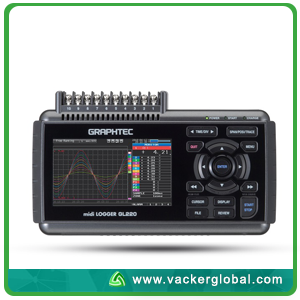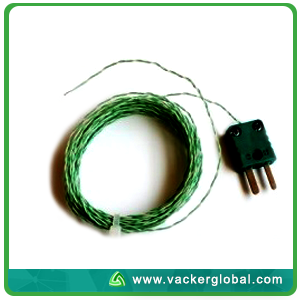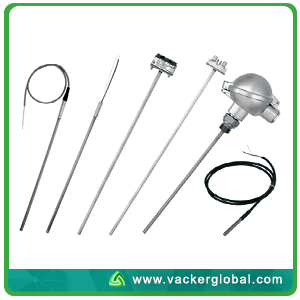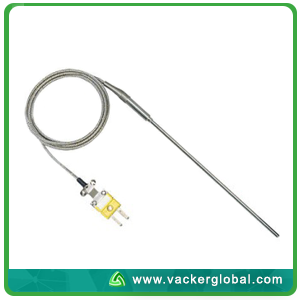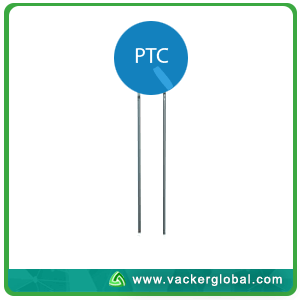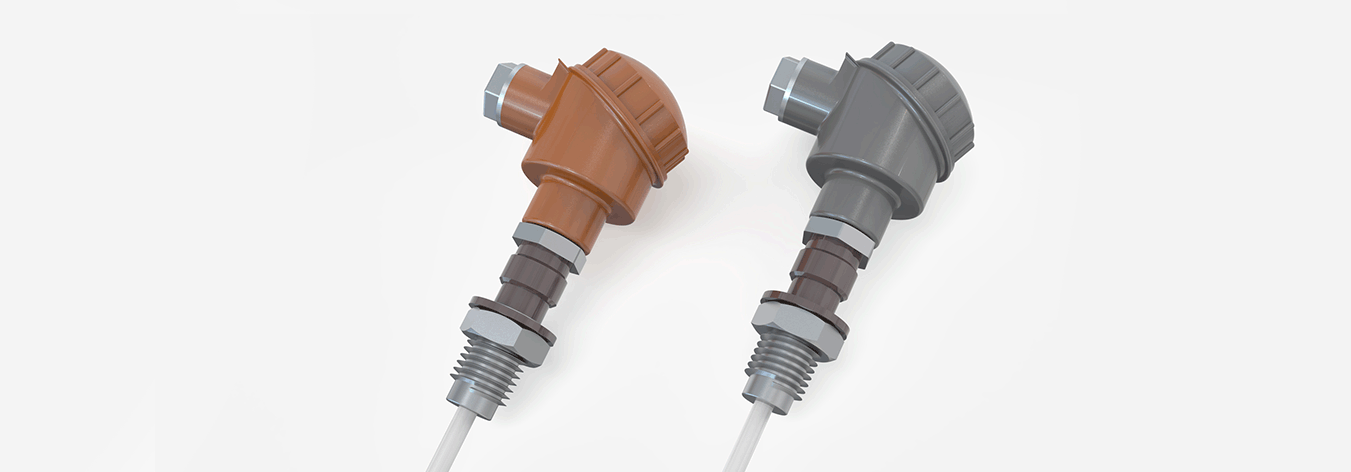 A thermocouple is a type of sensor used to measure temperature. A Thermocouple is a welded joint of two dissimilar metals known as bimetallic welded joint.
A thermocouple is a type of sensor used to measure temperature. A Thermocouple is a welded joint of two dissimilar metals known as bimetallic welded joint.
How does a Thermocouple Operate?
The operational principle is that a temperature difference between two dissimilar metals produces a small voltage and this voltage will be proportional to the temperature at the joint. This is known as Seebeck effect. By measuring this voltage, the corresponding temperature can be measured. By measuring this voltage, the temperature can be manually calculated or can be directly displayed using electronic display instruments as commonly done. Unlike other sensors, a thermocouple sensor does not require any external power.
Thermocouple elements are used in all industrial and commercial applications where temperature needs to be measured. To utilize a thermocouple as a power source you need another thermocouple working at an alternate temperature.
Categories of Thermocouple
Different thermocouple sensors are known by their type numbers such as Type J, K, N, T, etc. which are used for different applications, different temperature ranges, etc. Brief technical details are listed here:
- K Type Thermocouple (Nickel-Chromium / Nickel-Alumel)
K Type thermocouple is the most common type of thermocouple with a wide range of measurement from -200 to 1350°C. The main reason for the popularity of K type thermocouple is that it gives fair accuracy across a wide range of temperature measurement. Also, it is relatively cheap compared to many other types mentioned here. Thermocouples elements have a usage life and will require regular replacements. The easy availability and economical price make it convenient. The accuracy of a regular K type thermocouple is ± 0.75%, and special models are available with an accuracy of upto ± 0.4%. Nickel Chromium is the normal type K Thermocouple, whereas Nickel Alumel is the special type with better accuracy.
– Measurement Temperature Range of a K type Thermocouple is form -200 to 1300°C and it gives good accuracy across the entire range
– Measurement Temperature Range of K type Extension Wire with best possible accuracy is 0 to 200°C
- Type J Thermocouple (Iron/Constantan)
This also can be used in a wide range of temperature, however has a shorter life at high temperatures.
– Temperature Range of J type Thermocouple: -210 to 760°C
– Temperature Range of J type Extension wire : 0 to 200°C
- Type T Thermocouple (Copper/Constantan)
This type is especially for sub-zero applications where it produces best results.
– Temperature range of Type T Thermocouple :-270 to 370°C
– Temperature range of Type T Extension wire :0 to 200°C
-
Type E Thermocouple (Nickel-Chromium/Constantan)
The Type E is more accurate in the middle range of temperature
– Temperature range of Type E Thermocouple : -270 to 870°C
– Temperature range of Type E Extension wire : 0 to 200°C
- Type N Thermocouple (Nicrosil / Nisil)
The Type N is having similar characteristics of Type K, but with better stability
– Most efficient Temperature Range of Type N Thermocouple : -270 to 392°C
– Temperature Range of Type N Extension wire :0 to 200°C
- Type S, R, & B Thermocouples (NOBLE METAL THERMOCOUPLES)
These are known as Noble Metal Thermocouples and are expensive. These are especially suitable for very high temperature applications
– Most efficient Temperature Range of Type Noble metal Thermocouple : 600 to 1300°C
-
Type S Thermocouple (Platinum Rhodium – 10% / Platinum)
This type is used when stable results are required over very wide range of temperature with equally accurate results
– Temperature Range of Type S Thermocouple -50 to 1480°C
– Temperature Range of Type S Extension wire : 0 to 200°C
Types of Thermocouple Elements
Various types of thermocouple elements being supplied by us are:
- General Purpose Thermocouple
- Bayonet Mount Thermocouples
- Thermocouples With Plug
- Thermocouple With Connection Head
- Thermocouple with pipe fittings
- Armored Thermocouple
- Handheld Thermocouple
- High-Temperature Thermocouple
- Surface Mount Thermocouple
- Transition Joint Thermocouple
- Bare Lead Thermocouple
- Over braided Thermocouple
- Multi-Point Thermocouple
- Autoclave Thermocouple
- Magnet Mount Thermocouple
- Replacement Thermocouple
- Spring Loaded Thermocouple
- Bearing Thermocouple Sensor
- Tube Skin/Weld Pad Thermocouple
- Penetration Thermocouple
- Screw In Thermocouple
- Thermocouple wires
- Thermocouple extension cable
- Thermocouple compensating cable
Apart from various standard types of thermocouples, we also supply various custom made elements for numerous types of industrial and commercial applications.
VackerUAE is one of the leading suppliers of sensors and automation products. The company services and products are available in all the major cities of UAE that includes Dubai, Abu Dhabi, Sharjah, Ajman and many more. The thermistor is one of our products that has been in very high demand due to the reliability of the device compared to other companies. We have a wide range of thermistors that will ensure our customers can get all types of products they are looking for. The products are available in the most competitive price in the market with the warranty from our company.
Thermistor
Unlike other resistors, the thermistor is a unique resistor in which the resistance varies with the variation in temperature and hence the name. Thermistors have a wide range of applications and are used in many systems. They are widely used in temperature sensors as well as inrush current limiter. They are also used in automated heating elements and overcurrent protectors. The thermistors can be categorized mainly in two divisions as described below:
-
PTC
The extended form of PTC is positive temperature coefficient. As the name suggests in this type of thermistor shows increase in resistance with the increase in temperature. These thermistors can be used as a resettable fuse in an electric system. They help to control the danger that occurs from overcurrent conditions.
-
NTC
It is just the opposite of PTC thermistors as in this type of thermistors show increased resistance with the decrease in temperature. They help to control the danger that occurs from overvoltage conditions. These thermistors are used as current sink in electric system.
Generally, people get thermistors confused with resistance temperature detectors. But RTDs and thermistors are manufactured with completely different materials. Pure metals are used for the manufacturing of RTDs. While materials like ceramic or polymer are used in manufacturing thermistors. RTDs are used when the temperature is relatively higher. But the temperature ranges for thermistors are limited between -90 degree Celsius to 130 degree Celsius.
Why choose thermistors by VackerUAE?
Below listed are few of the several advantages of Thermistors provided by VackerUAE:
- One of the main advantages of thermistors by VackerUAE is that they are more sensitive and precise than their other counterparts.
- The range in which these thermistors can be used is also relatively higher.
- Our thermistors are so reliable that they have been used in many industries as well as medical applications.
- Our thermistors are available in all kinds of shapes and sizes. Beads, disc, chips, etc. are some of the shapes that our thermistors can be found.
- Our thermistors have been highly effective in providing mechanical stability as well as mechanical stability in a system.
- You can completely eliminate four-wire bridge circuits with our thermistors.
- The performance of our thermistors with the most competitive market price makes our thermistors the number one choice of the customers.
![]()

Vacker Dubai is a supplier of Thermocouple Sensor, Thermocouple Wires etc. for industrial applications.
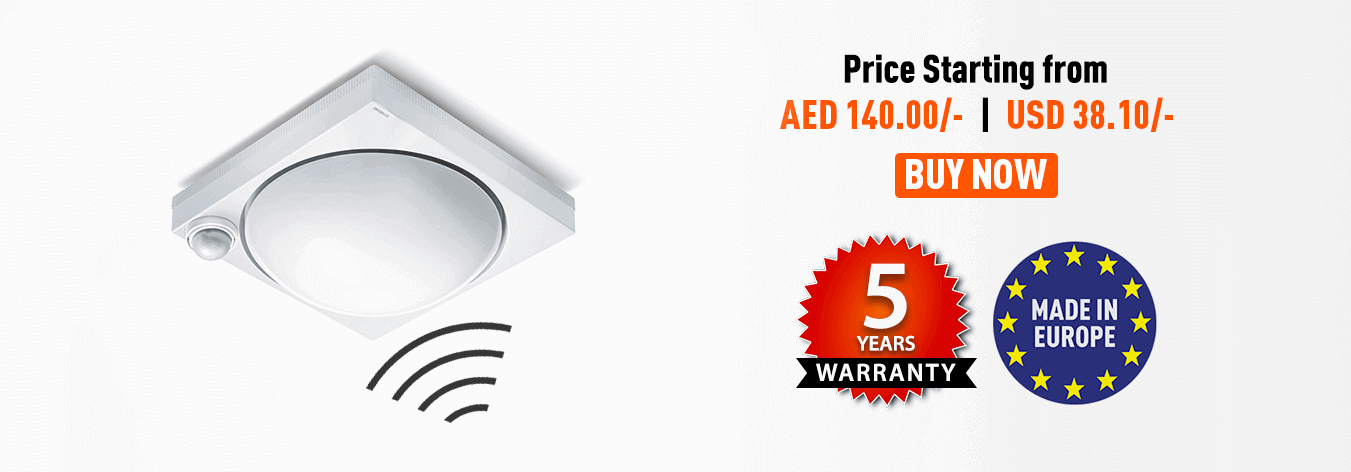
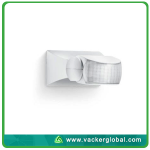 Motion sensors also are known as motion detectors and have become an integral part of security systems installed in residential, commercial, and public buildings. As their name suggests, they work by sensing motion and therefore play a big role in securing a property.
Motion sensors also are known as motion detectors and have become an integral part of security systems installed in residential, commercial, and public buildings. As their name suggests, they work by sensing motion and therefore play a big role in securing a property.
An Overview of Motion Sensors
A motion sensor is simply a device that monitors and detects moving objects within its effective range and then performs a specified function such as switching electrical circuits or setting off an alarm. Such a detector could also trigger a security camera to start recording an intrusion attempt or alert law enforcement officers about a break-in. In other words, a motion detector registers change in its field of view environment. This change could be a disturbance of radio waves, ultrasonic sound waves, motion sensor light, or detecting an increase in infrared energy. Motions sensors can use one or multiple technologies to detect any movement in its range of vision.
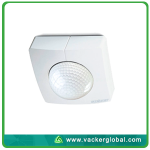 There are two types of sensors available on the market today: passive and active. A passive sensor monitors changes in the surrounding environment without emitting energy. Active sensors emit energy, such as infrared motion sensor light or microwave radiation, to identify motion in their field of view.
There are two types of sensors available on the market today: passive and active. A passive sensor monitors changes in the surrounding environment without emitting energy. Active sensors emit energy, such as infrared motion sensor light or microwave radiation, to identify motion in their field of view.
Motion-Sensing Technology
The main motion sensing technologies are briefed here:
Passive infrared (PIR) motion sensors
Passive infrared sensors contain pyroelectric material that generates electricity whenever it detects infrared radiation. When this happens, the sensors could trigger a burglar alarm or any other connected security device, or lighting circuits for example. This type of motion sensing technology is highly sensitive to heat generated by humans and animals at mid-infrared wavelengths. At this point, it is worth noting that a PIR sensor does not emit energy to detect motion. Instead, it simply contrasts body heat/temperature with temperature in the surrounding environment.
![]()
Ultrasonic motion sensor / Ultrasound motion sensor
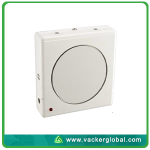 An ultrasonic motion detector can be either active or passive. Ultrasonic motion sensors are also known as ultrasound motion sensors. Active ultrasonic motion sensors emit ultrasonic waves and measure changes in reflected waves. It is worth noting that ultrasonic waves are sound waves generated at a frequency that humans cannot hear. However, pets like dogs, cats, and certain types of fish can hear these sounds. Passive ultrasonic sensors are sensitive to specific sounds such as glass breaking or metal hitting metal. The downside to installing passive ultrasonic sensors is they are expensive, high sensitivity and tend to give false alarms. In fact, both passive and active ultrasonic sensors are prone to generating false alarms because they work even when not in line-of-sight. This is because ultrasonic waves can bounce off walls and detect a movement across the glasses, detect even the air flow from an AC unit etc. Hence these motion sensors are especially used when you require a very high level of sensitivity.
An ultrasonic motion detector can be either active or passive. Ultrasonic motion sensors are also known as ultrasound motion sensors. Active ultrasonic motion sensors emit ultrasonic waves and measure changes in reflected waves. It is worth noting that ultrasonic waves are sound waves generated at a frequency that humans cannot hear. However, pets like dogs, cats, and certain types of fish can hear these sounds. Passive ultrasonic sensors are sensitive to specific sounds such as glass breaking or metal hitting metal. The downside to installing passive ultrasonic sensors is they are expensive, high sensitivity and tend to give false alarms. In fact, both passive and active ultrasonic sensors are prone to generating false alarms because they work even when not in line-of-sight. This is because ultrasonic waves can bounce off walls and detect a movement across the glasses, detect even the air flow from an AC unit etc. Hence these motion sensors are especially used when you require a very high level of sensitivity.
Microwave motion sensors
Microwave motion sensors emit microwave pulses and then measure the change in reflected pulses to determine whether there is an object moving in its field of view or not. A major advantage associated with a detector that uses microwave technology is it covers a larger area than one that uses infrared technology. Nevertheless, this type of technology is vulnerable to electrical interference. In addition, microwave pulses can pass through nonmetallic objects meaning they can detect motion beyond their intended range. Another major downside is most manufacturers design microwave sensors to cycle on and off because they use a lot of electricity. This means an intruder with a good grasp of these on-off cycles can get past such a sensor undetected.
Tomographic detectors
Tomographic detectors emit radio waves and measure disturbances as these waves pass from one point/node to another in a network. It is worth noting that radio waves can pass through inanimate objects such as walls. Overall, tomographic motion-sensing technology is very expensive. For that reason, you are likely to come across this type of technology in commercial buildings, warehouses, storage units, or high-end properties.
Dual technology motion sensors
Dual technology motion sensors employ a combination of two motion-sensing technologies. For example, consider a combination of a microwave and a passive infrared sensor. This combination of multiple sensors reduces the likelihood of false alarms because both sensors have to register motion to trigger a security alarm. This way the advantages of both the technologies are incorporated in the same device.
![]()
Area reflective infrared sensors
A sensor using this technology emits infrared rays and then measures the distance to a moving object. If this object is within its designated range, it will trigger a security alarm or perform a specified function.
What are motion sensor lights?
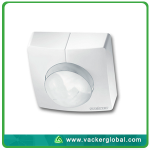 Motion sensor lights are lights and motion sensors combined in one unit. This unit can be simply installed in an electrical circuit in a room. When a motion is detected by the sensor, the lights are automatically switched ON. In this case, you did not need to install any additional circuitry for lighting. Motion sensor lights are for simple installations in small rooms when user need not understand any technicalities.
Motion sensor lights are lights and motion sensors combined in one unit. This unit can be simply installed in an electrical circuit in a room. When a motion is detected by the sensor, the lights are automatically switched ON. In this case, you did not need to install any additional circuitry for lighting. Motion sensor lights are for simple installations in small rooms when user need not understand any technicalities.
Tips for Installing Motion Sensors
It is worth noting that motion sensors are not error-proof. In other words, they can generate false alarms irrespective of the type of technology in play. Possible causes of false alarms include power surges, lightning, electrical failures, poor or erroneous wiring, insects, foliage, and faulty detectors. With this in mind, there are certain factors you should consider when installing a motion sensor. First, read manufacturer’s instructions carefully.
Next, it is advisable to keep sensors that use PIR technology at least 10-15 feet from radiators, heating vents, and areas where sunlight tends to fall. This is because PIR sensors tend to generate false alarms when they detect swift changes in heat. For instance, a cloud passing quickly overhead may cause this problem. Car headlights also tend to affect PIR sensors.
A motion sensor is selected mainly by the area of coverage required and the type of technology. The sensor used for a small room and a big room will be different by the distance of vicinity. If a motion sensor suitable for a small room is used a big room, the sensor will be able to detect only a small area around the motion sensor. The distance of vicinity of a motion sensor can be defined in feet or meters. A motion detector with 360 Degree, 20 mettr coverage means it can detect 20 meters from the installation point at all angles.
What are blind spots of motion sensors and how to avoid them?
Additionally, go for a motion sensor with dual motion-sensing technology if you are worried about blind spots. The majority of motion detectors tend to have blind spots, meaning they could fail to trigger security alarms during a burglary or unauthorized entry. A good example is a motion detector that uses PIR technology. It cannot detect a person or object moving towards it in a straight line. In this case, a motion sensor that combines multiple technologies would come in handy. Alternatively, install sensors in such a way that people would have to walk past, not towards them.
Finally, install motion sensors at entry or “choke” points. These are areas where people have to walk through or past such as doors, hallways, and stairwells. This will increase the likelihood of an intruder triggering a security alarm.
The Main Benefits of Installing Motion Sensors
Some of the main benefits of installing motion sensors include:
Energy saving: This is one of the most important applications of motion sensors. Various electric items such as lights, fan AC, etc. can be automatically switched OFF if there are no occupants in the particular room. Hence manual switching ON and OFF of these circuits is not required.
Security systems: Properly installed motion sensors will detect intruders. A burglar is unlikely to stick around after triggering an alarm. Also, CCTV cameras can be activated upon detecting an intruder.
Home insurance discounts: Many insurers give discounts to homeowners who take steps to deter potential intruders.
Enhanced neighborhood security: Intruders tend to give a wide berth to a neighborhood where residents have installed security systems such as motion sensors.
Conclusion
Motion sensors are widely used in green buildings, commercial and residential buildings, offices, homes, etc. for saving electrical energy. Substantial energy saving has been proved by proper usage of various types of motion sensors.
Also, Motion sensors can make it hard for burglars to break into your home because they monitor changes in their environment and if there is a change, trigger a security alarm or alert law enforcement officers. To achieve this goal, they rely on motion sensors utilizing technologies such as Passive Infrared (PIR), microwave, ultrasonic, and tomographic waves.
![]()
In the Middle East, we serve the United Arab Emirates, Kingdom of Saudi Arabia, Oman, Qatar, Bahrain, Iraq, Lebanon, Egypt, Jordan, Libya, Tunisia, etc.
In Africa, we serve countries including Kenya, Algeria, Tanzania, Djibouti, Chad, Ghana, Rwanda, Uganda, Nigeria, Ethiopia, Morocco, Angola, South Africa, etc.
Also, we supply to India, Bangladesh, Pakistan, Afghanistan, Kazakhstan, Srilanka, Maldives, and Cyprus.

